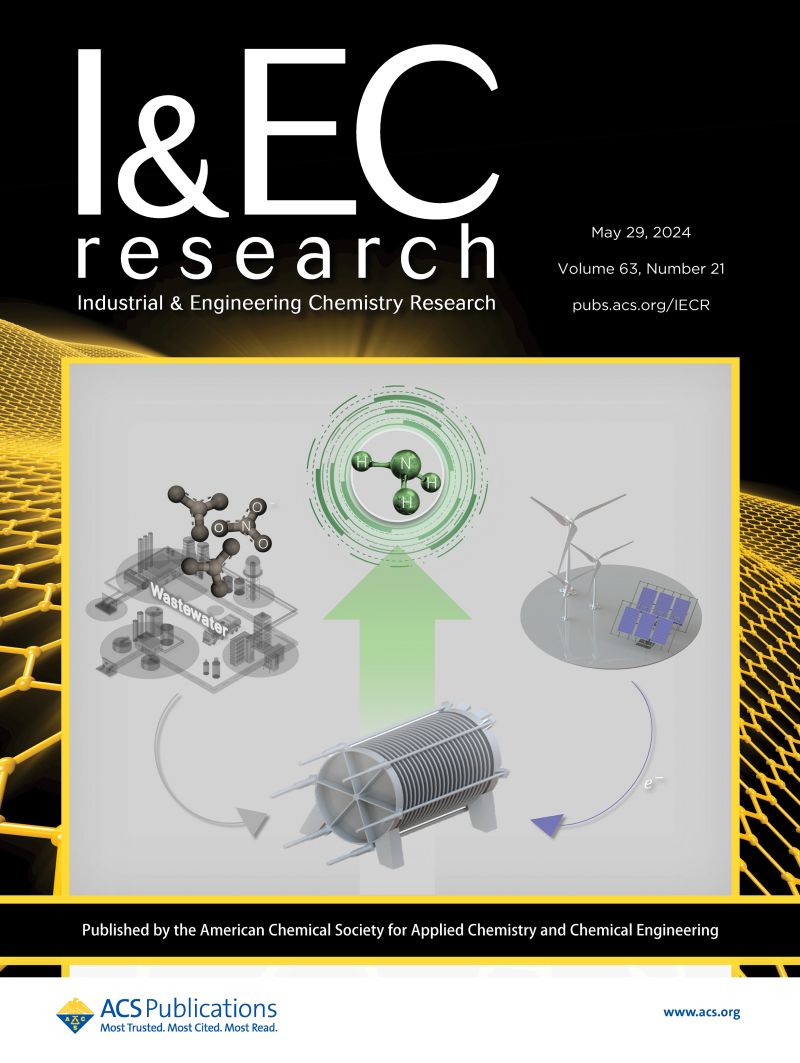具有金属碳化物/金属氮负载相互作用的高性能钼基多组分催化剂的原位构建
IF 3.8
3区 工程技术
Q2 ENGINEERING, CHEMICAL
引用次数: 0
摘要
非贵金属负载型催化剂的开发对化学工业的发展至关重要。在本研究中,我们通过金属配合物的热分解方法,将β-Mo2C和γ-Mo2N原位加载到可还原性MoO2-x上,成功地合成了钼基三组分催化剂(Mo-BMC)。值得注意的是,XPS揭示了Mo-BMC中从β-Mo2C和γ-Mo2N到MoO2-x的显著电子转移,反映了金属碳化物/金属氮化物支撑相互作用的存在。以反水气转换反应(RWGS)为模型,Mo-BMC表现出优异的催化性能,在500℃下CO2转化率为43.07%,CO选择性超过99.7%,比5% Pt/ MoO2-x的CO2转化率(12.61%)高3.42倍。机理研究表明,在Mo-BMC中,可还原的MoO2-x主要促进CO2的活化,而pt样的β-Mo2C和γ-Mo2N则有效活化H2。RWGS反应通过甲酸机制进行。通过用β-Mo2C和γ-Mo2N取代传统金属负载催化剂中的活性金属,Mo-BMC不仅保持了高活性,而且显著降低了成本,提高了抗烧结性能。本研究为开发新型高性能催化剂提供了新的途径,有效地推进了低成本、高活性、高稳定催化剂的工业应用。本文章由计算机程序翻译,如有差异,请以英文原文为准。

In Situ Construction of High-Performance Molybdenum-Based Multicomponent Catalysts with Metal Carbide/Metal Nitride-Support Interactions
The development of nonprecious metal supported catalysts is crucial for advancing the chemical industry. In this study, we successfully synthesized molybdenum-based three-component catalysts (Mo-BMC) by in situ loading β-Mo2C and γ-Mo2N onto the reducible MoO2-x through the thermal decomposition method of metal complexes. Notably, XPS revealed a significant electronic transfer from β-Mo2C and γ-Mo2N to MoO2–x in Mo-BMC, reflecting the presence of strong metal carbide/metal nitride-support interactions. Using the reverse water gas shift reaction (RWGS) as a model, the Mo-BMC demonstrated outstanding catalytic performance, achieving a CO2 conversion of 43.07% and over 99.7% CO selectivity at 500 °C, outperforming 5% Pt/MoO2–x with a CO2 conversion (12.61%) 3.42 times higher. Mechanistic studies reveal that in the Mo-BMC, the reducible MoO2–x primarily facilitates CO2 activation, while the Pt-like β-Mo2C and γ-Mo2N effectively activate H2. The RWGS reaction proceeds via the formate mechanism. By replacing active metals in traditional metal-supported catalysts with β-Mo2C and γ-Mo2N, Mo-BMC not only retains high activity but also significantly reduces costs and improves sintering resistance. This study provides a new approach for the development of novel high-performance catalysts, effectively advancing the industrial application of low-cost, high-activity, and highly stable catalysts.
求助全文
通过发布文献求助,成功后即可免费获取论文全文。
去求助
来源期刊

Industrial & Engineering Chemistry Research
工程技术-工程:化工
CiteScore
7.40
自引率
7.10%
发文量
1467
审稿时长
2.8 months
期刊介绍:
ndustrial & Engineering Chemistry, with variations in title and format, has been published since 1909 by the American Chemical Society. Industrial & Engineering Chemistry Research is a weekly publication that reports industrial and academic research in the broad fields of applied chemistry and chemical engineering with special focus on fundamentals, processes, and products.
 求助内容:
求助内容: 应助结果提醒方式:
应助结果提醒方式:


